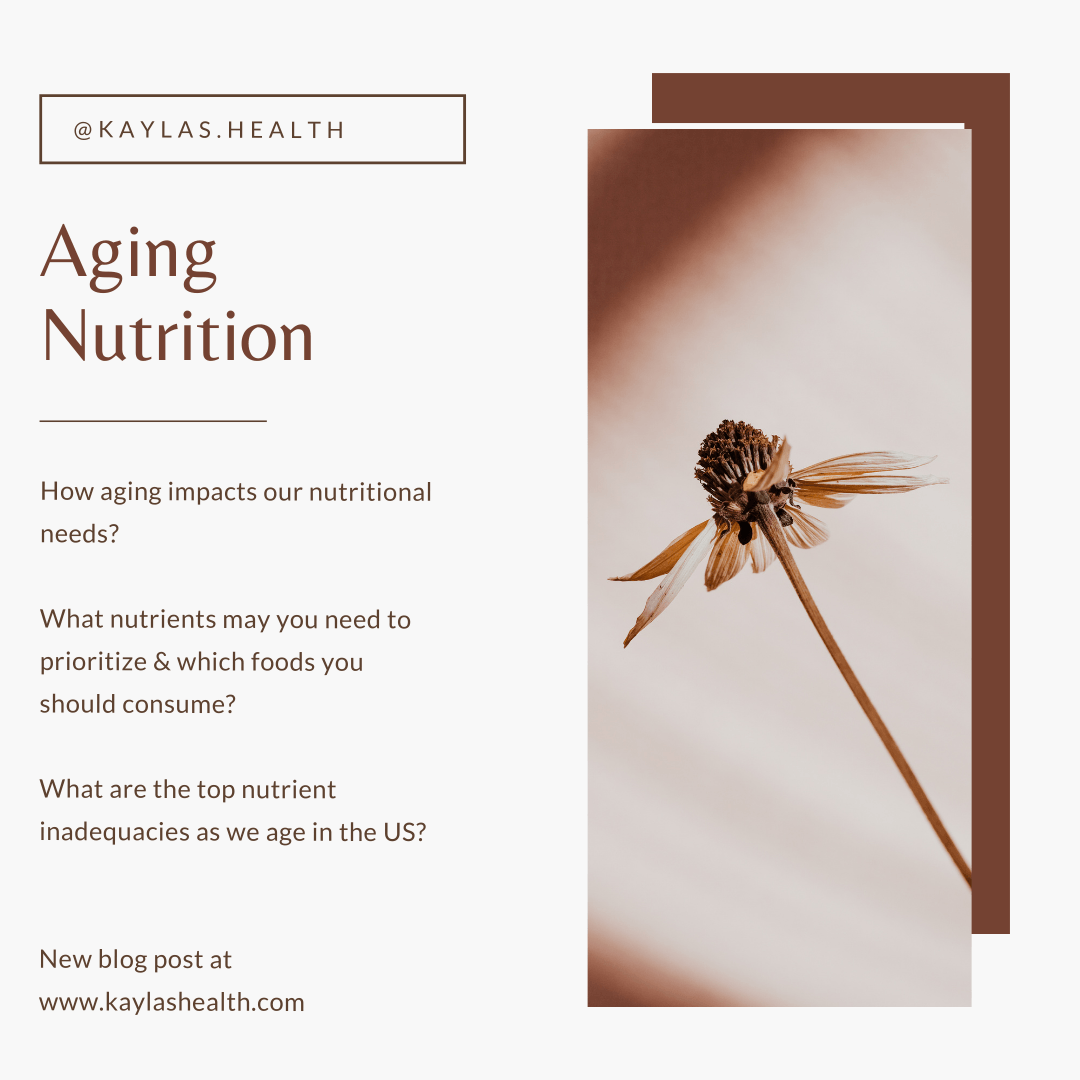Aging Nutrition
Kayla Castle • September 2, 2021
As we age so do our body's nutrient needs. Getting adequate nutrition from food is preferred followed by supplementation if needed. Iron, calcium, vitamin D and potassium are the top nutrients that are inadequately met in the US. In this article, we are going to highlight some of the key growth nutrients.

Iron, a common inadequacy among vegetarians/vegans, young children, adolescent girls and women of child-bearing age. Anemia is a common iron-deficient condition. Which affects the quantity of your red blood cells and their ability to carry oxygen. Symptoms of iron deficiency include fatigue, metallic taste, unusual cravings for dirt or ice, cold sensitivity, dizziness, etc.
It is not recommended to supplement with Iron unless your doctor advises you so. Iron consumed in excess is dangerous. Foods such as lean meat, seafood, poultry, iron-fortified cereals, beans and lentils are good iron sources.
Tip: Vitamin C increases iron absorption from food when consumed together! A powerful iron-vitamin C meal example duo would be a chicken stir-fry with bell peppers and lime.
This leads us to our next nutrient; vitamin C
Inadequate Vitamin C consumption symptoms include slow wound healing, bleeding gums and easy bruising. Fruits and vegetables are all great sources of vitamin C.
Vitamin D
With people spending more time indoors it lessens our vitamin D levels. A simple way to fix this is getting outdoors! Go for a 10-minute lunch break to walk in the sunshine. Not only will it increase your vitamin D but also help relieve stress and squeeze some more movement into your day. While our bodies naturally produce some vitamin D, the sun helps to increase production and several products are fortified with vitamin D (orange juice, tuna and dairy products).
Calcium
Calcium keeps our bones and teeth strong. Carries messages from the brain throughout the body, releases hormones, moves muscles and helps to circulate blood. Older adults are especially concerned about inadequate calcium consumption, as well as teenagers and those who follow a restrictive/limited diet. Nowadays a lot of foods are fortified with calcium such as orange juice and tofu. Other sources of calcium include cheese, yogurt, milk and dark leafy vegetables.
Potassium
helps regulate fluid balance, regulate muscle contractions and promotes healthy nerve function. Potassium inadequacy symptoms include fatigue, muscle spasms/cramps, muscle aches, and heart palpitations. 98% of Americans are not meeting their daily potassium needs. Sweet potatoes, beets, bananas, lentils, dried fruit, beans and avocados are great potassium sources.
Johnson A RD, LDN, CSP. Is Your Body Trying to Tell You Something? Possible Nutrient Inadequacies and Deficiencies. Eat Right.

You know when you eat something sweet and then later in the day you start feeling sluggish and tired? That sugar crash feeling is from a sharp rise in blood sugar levels followed by a decline. Having consistent blood sugar levels provides us with a consistent energy boost. By structuring our meals in a balanced pattern, you will be less likely to experience a “sugar crash”.





































































































